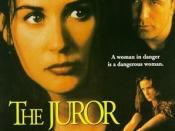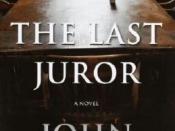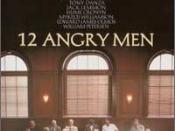In Twelve Angry Men, a boy is convicted of the murder of his father and 12 jurors are chosen to decide his fate. In the beginning, all of the evidence points to him being guilty. However, after a little bit of analysis of the evidence, there is some reasonable doubt. Slowly all of the Jurors accept the boy as innocent except for one very stubborn juror: Juror 3. The differences and similarities between the stage directions and the directorÃÂs shot selection in the film and in the text affect the readerÃÂs interpretation of the final scene where Juror 3 says not guilty greatly.
There are many similarities between the two versions. One similarity is how the jurors reacted to Juror 3ÃÂs resistance to the chance of the boy being innocent. In both the play and the film, the jurors simply stare at Juror 3 out of amazement of his ignorance to the facts.
When Juror 8 asks him why he still isnÃÂt convinced, Juror 3 says that itÃÂs his right. He also says that he is entitled to his opinion. This similarity helps add to the question to why Juror 3 is so bent on getting the boy convicted. Another similarity is that Juror 8 seems confident that Juror 3 will pull through his mindset of the boy being guilty. In the play, the playwright says that Juror 8 asks Juror 3 of his arguments calmly and quietly. Juror 8 does the same in the film. Juror 8ÃÂs calmness and quietness seems to show that he is confident about the verdict and that he can convince Juror 3 that the boy is innocent. The final similarity being discussed will be about how Juror 3ÃÂs tone of voice affected the readerÃÂs inference of his character. In the play the playwrightÃÂs...


